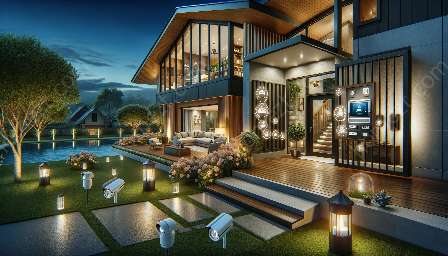Safe rooms, also known as panic rooms, are specially designed spaces within a home that provide a secure and fortified location for occupants in the event of a threat or emergency. These rooms not only contribute to home burglary prevention but also enhance overall safety and security. In this guide, we will explore the design and utility of safe rooms, their compatibility with home burglary prevention, and their role in ensuring home safety and security.
Design of Safe Rooms
The design of safe rooms is a critical aspect that determines their effectiveness in providing protection and security. These rooms can be integrated into various areas of a home, such as bedrooms, basements, or dedicated stand-alone structures. When designing a safe room, several key elements should be considered:
- Structural Integrity: Safe rooms are constructed using materials and designs that can withstand extreme forces, including attempted break-ins, ballistic threats, and natural disasters. Reinforced walls, ceilings, and doors are essential components of their design.
- Communication Systems: To ensure that occupants can call for help or communicate with the outside world, safe rooms should be equipped with reliable communication devices, such as cell phones, landlines, or two-way radios.
- Ventilation and Air Filtration: Adequate ventilation and air filtration systems are crucial to sustaining occupants during extended stays in a safe room. These systems prevent the buildup of carbon dioxide and ensure a fresh air supply.
- Security Features: Safe rooms should be equipped with secure locks, access control systems, surveillance cameras, and alarms to deter and detect unauthorized entry attempts.
- Supplies and Amenities: Stocking the safe room with emergency supplies, such as food, water, first-aid kits, and sanitation facilities, is essential for sustaining occupants until help arrives.
Utility of Safe Rooms
Safe rooms serve multiple purposes that contribute to home security and safety:
- Protection During Burglaries: In the event of a home invasion or burglary, a safe room provides occupants with a secure location to seek refuge and contact law enforcement for assistance.
- Shelter During Natural Disasters: Safe rooms offer protection from severe weather events, such as tornadoes, hurricanes, and earthquakes, minimizing the risk of injury or fatality.
- Defense Against Home Invasions: The presence of a safe room can act as a deterrent to intruders and provide occupants with a defensive advantage in the event of an attempted break-in.
Compatibility with Home Burglary Prevention
Incorporating a safe room into a home's security plan enhances its ability to prevent burglaries by providing a secure location for occupants to seek refuge in the event of a break-in. Moreover, the presence of a safe room may serve as a deterrent to potential intruders, as it demonstrates a proactive approach to home security.
Safe Rooms and Home Safety & Security
The inclusion of a safe room aligns with the broader goals of ensuring home safety and security. By providing a fortified space that can withstand threats and emergencies, safe rooms play a crucial role in safeguarding occupants and minimizing the impact of security risks. Furthermore, the peace of mind afforded by the presence of a safe room contributes to an overall sense of security within the home.
When considering home safety and security measures, safe rooms represent a proactive and effective solution that complements traditional security systems and practices. Investing in the design and implementation of a safe room can significantly enhance the protective capabilities of a home and provide occupants with a valuable resource in times of crisis.



